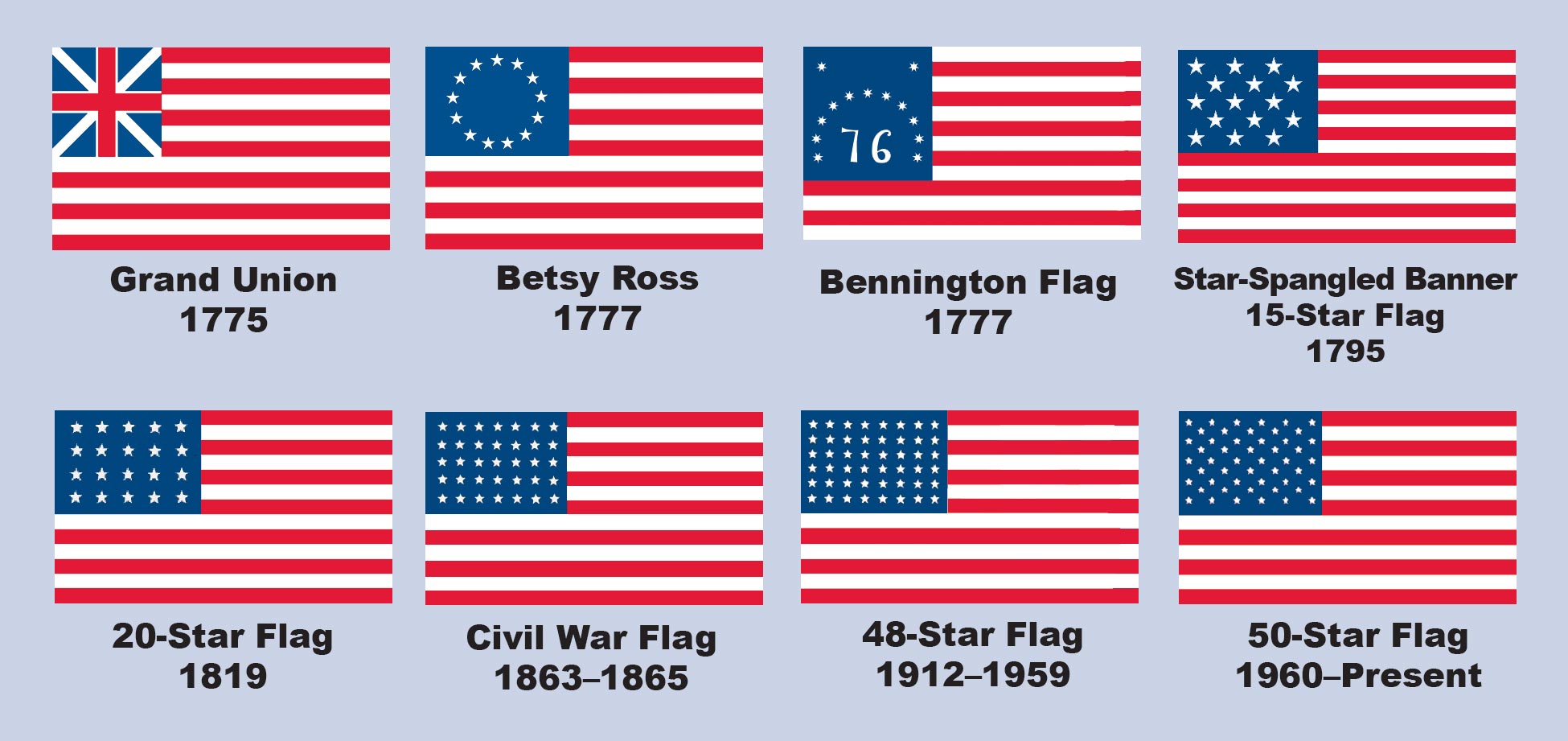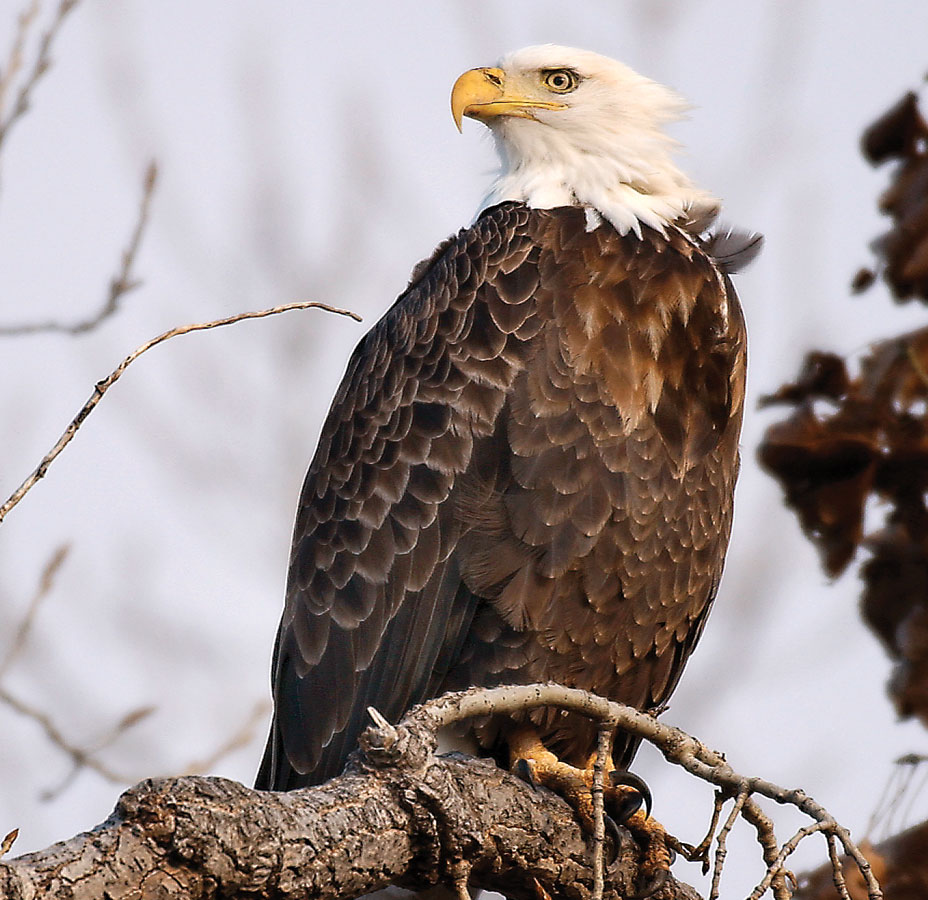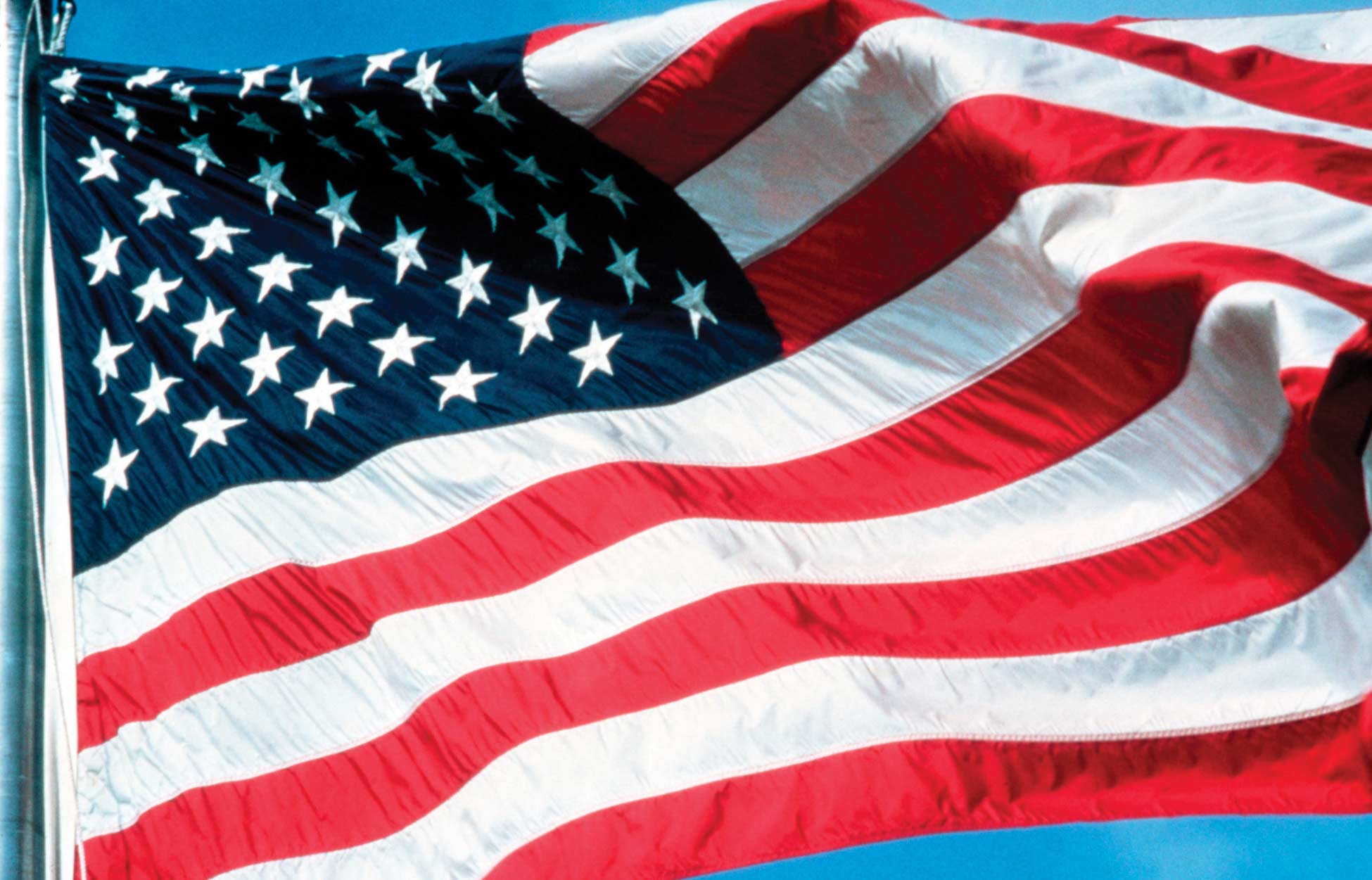The American flag is a symbol of our nation—the United States of America. The 13 stripes symbolize the first 13 states in the United States. The first American flag had 13 stars, but the flag today has 50. Each star stands for a state.

Figure 47. Many different flags have flown over the United States. These are some examples of flags that have been the flag of the United States since the Revolutionary War. (SHSND-ND Studies)

Figure 48. The American Bald Eagle was chosen as a symbol of the United States in 1782. The bald eagle is an important symbol because of its long life, great strength, and majestic (grand) looks. (ND Game and Fish Department)
The rights and responsibilities of every U.S. citizen are represented by the display of the American flag. It is a symbol of the respect and pride that citizens have for their nation. Certain rules of etiquetteGood manners relate to the American flag and should be followed to show pride and respect for the nation.
The Pledge of AllegianceA promise to be loyal to the United States is a promise that one will be loyalFaithful to the United States. While saying the Pledge of Allegiance, one should show respect by standing at attention and facing the flag. Hats should be removed, particularly by males. The right hand should be placed over the heart.

Figure 49. The beautiful American flag flies at many places all over the United States. (U.S. Department of Defense)
The Flag Code is a list of instructions that tells how the American flag should and should not be handled. The purpose of the Flag Code is to help people know how to treat the flag respectfully.
Flag Code
- The American flag may be displayed on a flagstaffPole for attaching the flag during daylight hours and at night if lights are shown on it.
- The American flag should be displayed near schools, government buildings, public buildings, and polling (voting) places.
- When flown with other flags, the American flag should have the place of honor (either higher than the other flags or to its own right).
- The American flag should be the first flag to be raised and the last flag to be lowered.
- When displayed in a church or on a stage, the American flag should be displayed in the position of honor either behind and above the speaker or at the speaker’s right as he or she faces the audience.
- When displayed without a flagstaff, the field of stars of the American flag should be on the upper left.
- When the American flag is carried at the beginning of a parade, spectators• People watching should remove hats and stand at attention with the right hand placed over the heart. This salute should be held until the American flag has passed.
- The President or Governor may order the American flag to be flown at half‑staffHalfway between the top and bottom of the flag pole to pay respect to someone (usually a government leader) who has died.
- The American flag is used to cover the casket of a person who has served in the military. It is removed before the casket is lowered into the grave.
- Folding the American flag properly is done by two people following strict guidelines used only for this flag.
- The American flag should not be allowed to touch the ground.
- The American flag should not be displayed during stormy weather unless an all‑weather flag is used.
- The American flag should not be draped to hang over any part of a vehicle, train, or boat.
- The American flag should not be used as clothing, bedding, or drapery.
- The American flag should not be used for decorating or advertising.
- The American flag should not have anything attached to it or printed on it.
- The American flag should not be displayed if it is worn or frayed. It should be disposed of in a respectful manner.


